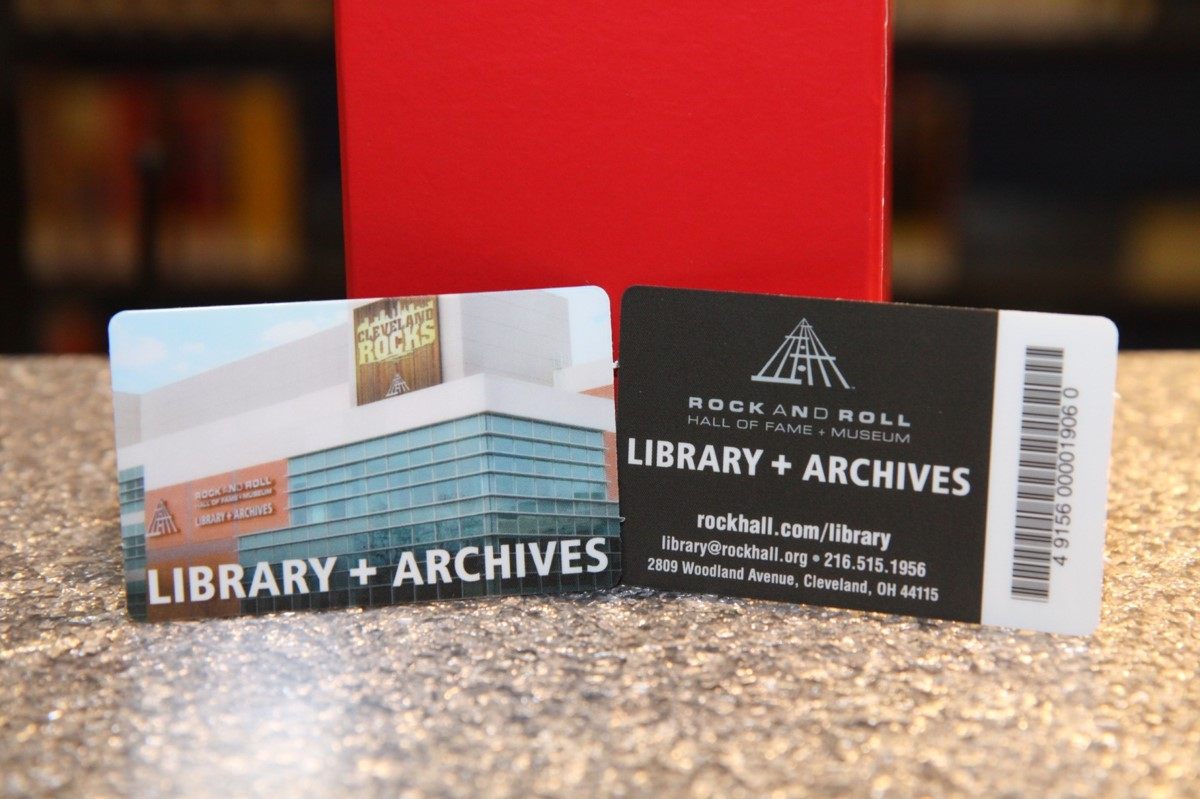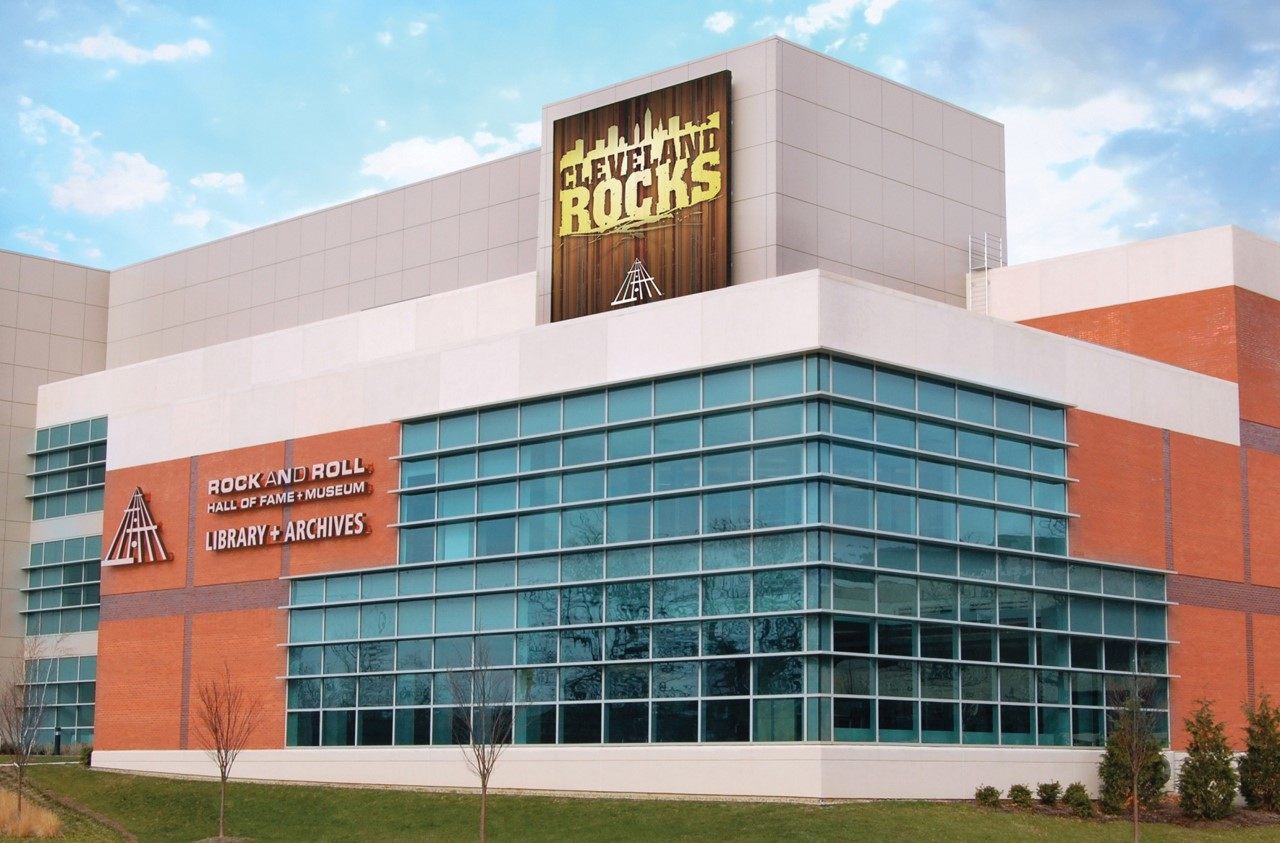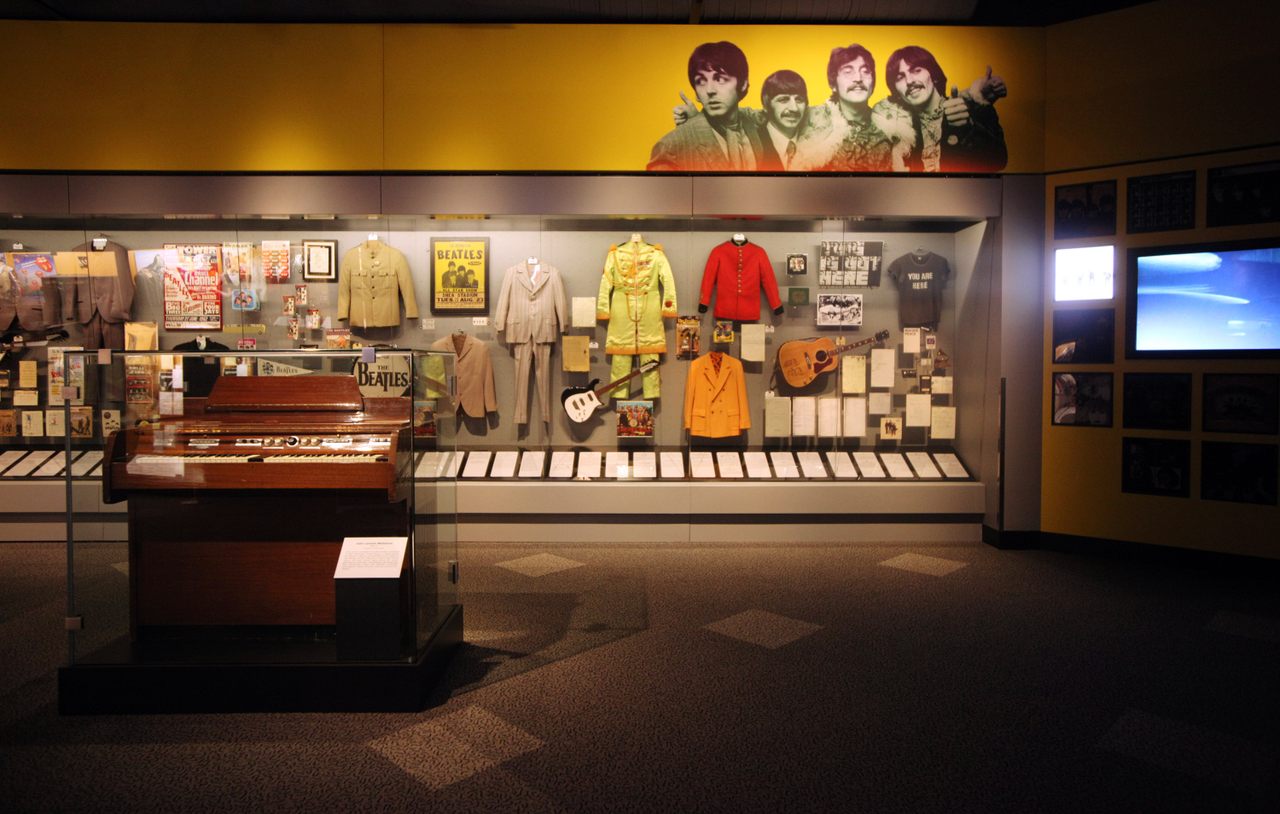A Day in the Life of a Rock ‘n’ Roll Librarian
It’s not all finding secret notes from Keith Richards… but some of it is.
The Rock and Roll Hall of Fame, in Cleveland, Ohio, is best known for its raucous and dramatic induction ceremonies. But it also has a quieter side: a library and archive, full of research materials, artifacts and memorabilia, and shelves and shelves of old records. Overseeing the Rock Hall collection is high on many people’s list of dream jobs, so Atlas Obscura talked with lucky librarian Laura Maidens about playlist inspiration, Ramones-themed prayer cards, finding secret notes from Keith Richards, and other highlights of the gig.
Why did you want this job?
I had actually already worked here as a project cataloger, in the lead-up to the opening of the library and archives in 2012. I cataloged many of the materials that are in the library’s collection right now: the books, CDs, DVDs, etc. I had also worked here before that, as an intern and a volunteer. Just because—like the article points out—what cooler librarian job is there than being the librarian at the Rock and Roll Hall of Fame?
So I actually met Andy [Leach], the library’s director, and Jennie [Thomas], who is now the director of archives, at a career fair at Kent State back in 2010, when I was in grad school. We had career fairs and internship fairs, where different institutions would come and let you know what kinds of opportunities they had. We had to complete a practicum in order to fulfill our Masters of Library and Information Science degree. So I saw that they were offering internships, and I immediately started contacting them about trying to find a place for me, a project of some sort that I could work on. That’s kind of how I started my career here.

Why do you think you were the one who got the job?
It’s really a combination of a lot of things. The fact that I was here five years ago as a project cataloger, and got to know the collection and the institution, really helped a lot. But then also, I have a lot of passion for rock music. The project cataloging was the most exciting job I had ever had. So I really showed a lot of enthusiasm in my interview process, because it is such an exciting place to work.
They were also looking for someone who had both public services skills and cataloging and technical services skills, and I have a kind of unique combination of those two things. Before I became a librarian, I worked in retail for many years. I also did public services reference work at my previous library job, as well as cataloging. So I think that that was probably the hardest thing for them to find: someone who had both the public-facing skill and the technical skill.
What’s the day-to-day like?
I split my time between several things: mainly ordering and cataloging new materials that come in, and additional tasks such as reference, instruction, and outreach. Before I started, there had been no librarian in this position here since about February, so there’s a lot of organizing things, figuring out where things are going, and figuring out new processes. This is also largely a new position—there used to be one cataloging and metadata librarian, and one public services librarian, and they’ve basically combined those into one.
For public services, there’s not always someone in the library reading room—we’re only open by appointment, and we’re not open to walk-ins. But anytime a researcher comes in, or anyone sets a research appointment or visits the library, we have someone staffing the desk. So that’s another thing that I do.

We also plan outreach, like events, to try to get people to come in—see what’s going on here, what our collections are like. This past weekend, on Saturday evening, we had an event where—I don’t know if you know the band the Dead Boys. They’re a punk band from Cleveland in the ’70s and ’80s. Two of the former band members are touring as the Dead Boys, and they have three more band members they play with now. They came here on Saturday, with a photographer [Dave Treat] who did a lot of photos for them early on in their career. Treat talked about his photographs and then the band played.
This is the first live music event we’ve had at our location that I know of, but we have other events like lectures and interviews. But then we also do outreach in the form of working with students—we do instruction for classes on how to research with our materials. There are a lot of local colleges that will bring classes in to do instructional sessions, and then have an assignment that is attached to their visit.

What’s your relationship with rock ‘n’ roll?
I grew up listening to all kinds of music with my mom. Elton John; the Moody Blues; Abba; Tom Petty. My first rock concert experience was seeing Tom Petty here in Cleveland when I was 12. It’s really something that has surrounded me my whole life. I’m not a musician myself, but I have friends who are in bands. My husband is a music collector, and he plays guitar. He’s got like 5,000 CDs.
Personally, I really like to make playlists. I’m actually a part of this all-woman dance group, called Dance Dance Party Party. We dance on the first, third, and fifth Fridays of the month. I usually make a lot of playlists for that. So I’m interested in the way that music relates to itself—I like finding themes in music, and bringing those things together. My first [stint at the library], I would create a lot of my playlists from things that I was cataloging at the time. I did a whole hour-long Stevie Wonder playlist. Nobody believed me that I could come up with an hour’s worth of danceable Stevie Wonder songs. But since I had just cataloged his entire collection, I had everything I needed.
Beatles or Rolling Stones?
That is a personal question! It’s tough. Influence-wise—and this is not an official view of the library—I would have to go Beatles.
How do you decide what ends up in the library?
We have two different collections: a library collection and an archival collection. The library materials are published, mainstream materials, like books, DVDs and CDs, and periodicals and magazines. And the archival materials are one-of-a-kind items, like correspondences, recording contracts, photographs, items of that nature. I deal with the library materials. I select what we purchase; I go through requests and suggestions from the staff about things to add to our collection. Then we also get a lot of offers for donated items.

A lot of times people will contact us trying to unload an entire record collection. Which, we have plenty of records! We tend to not entertain those offers unless they have particularly rare or one-of-a-kind or hard-to-find items. Or if they have a really well-done inventory of their collection, so we can at least see what they have, and see if there are any holes in our collection that we can fill in.
What is something that might surprise people about your job?
I think the most surprising thing to people is that it’s a position that requires a Masters degree. A lot of people don’t realize that most of the time, librarian jobs do require a Masters.
You talked about hosting a lot of students. Do you think libraries like yours, that focus on specific and sometimes unexpected topics, can help people get more interested in library science in general?
I think so. Even for myself, I’m way more engaged when I’m cataloging items that are interesting and have a historical perspective that I want to learn more about. When you’re engaged by the materials, it helps you get both more engaged with the topic, and with the idea of handling materials in general.

What’s one particularly exciting thing you’ve found?
Since I’ve only been here for a few weeks at this point, I haven’t even really gotten to catalog that much! But when I was here earlier, as a project cataloger, a coworker of mine was cataloging a French graphic novel. It had been donated, and there was a note in the front if it, on the inside cover. The note was about trying to get this guy to come to Jamaica and spend some time there, and how they were going to have a good time together. There was a phone number and all this stuff. But there wasn’t an easy way for us to know who wrote this note, because the signature at the bottom was kind of a scribble. My coworker passed this to me and said, “Do you think this was written by someone famous or notable?”
The first letter kind of looked like a K, and the first letter of the last name kind of looked like an R. So I went to Google image search, and I looked for Keith Richards’s signature, and sure enough it was Keith Richards.
There are a lot of signatures, or items that were just shoved into books—little notes and things like that. You kind of never know what you’re going to find.
What’s the weirdest thing in the archives overall?
I tossed this one to Anastasia Karel, the archivist and assistant curator. She suggested “Perpetual Mass Cards for the Ramones.” The catalog description says it all: “The Perpetual Mass Cards for the Ramones contain a card for each member of the original Ramones: Dee Dee, Joey, Johnny, and Tommy. The cards were requested by donor Robert Murray in order that the Ramones would ‘share in the daily Masses, Prayers, and Works’ of the Holy Apostles Seminary in Cromwell, Connecticut.”
What’s the best part of your job?
The best part is just being here, being surrounded by everything that I’m surrounded by all the time. It’s really a joy to walk into work and be in this kind of environment. Everything here is so interesting, and it really helps you to be enthusiastic about the work that you’re doing.

When I was here cataloging before, we started by gathering materials about our inductees in first. So all the project catalogers would pick one inductee at a time—somebody that we were passionate about or interested in. We would catalog everything on that band or musician that we could find. Some of the first ones that I did were the Clash, Carole King, Van Halen, and Steely Dan. It was cool to listen to the music as you were going through and cataloging, and get an overview of their career from past to present. I think a lot of librarians really do the work that they do because they love to learn anyway. And what’s better than just constantly learning about one of your favorite topics?
When people come to do research at the library, what are they usually looking for?
A lot of times, people will come in to get information or photographs for books that they’re writing, whether they’re biographies or music criticism. That’s what the bulk of our researchers are doing. Sometimes they’re trying to find information for a class that they’re teaching. But sometimes people come in for other reasons too. Yesterday I had a local guy who is a rock music fan—he’s a member of the museum, and he really just wanted to see what the library was like and what our collections are like. He was kind of tickled to see all the items that we could find for him. We found him a DVD of an old band that he knew in Cleveland in the ’70s, and we put that on for him. So we have a little bit of something for everybody.

How do you deal with different media formats?
It depends. We have different collecting protocols between the library and the archives. If I find, say, a VHS tape of something, a lot of times I will try to find the same thing in a more current format. In the library, we’re more interested in those items being usable for researchers. We want them to be able to listen to that album or view that item in a way that makes more sense. And then the archives might be more open to these different formats, and will digitize things as needed. We have an audiovisual archivist here who digitizes all of the induction ceremony footage—that’s one example of a way we contribute to things that go on at the museum.
What about different genres? Is it strictly a rock ‘n’ roll library?
We’re not only interested in rock ‘n’ roll as a specific genre, but also in what influenced it and what has become of it. So we’re interested in the roots, like the blues, country, gospel, folk, and R&B groups. But then we’re also looking at how it has morphed into new genres, like rap, pop music, things like that. So we have a pretty wide collecting scope. Right now, we’re particularly looking for materials about our inductees and our nominees, both past and current. And then we’re also focusing on women musicians, and on local music and venues [in the Cleveland area].
One last question: have you ever had to shush anyone?
Haha! I personally have not had to shush anyone in our Library & Archives, and I think you will find that most librarians find that to be an outdated concept. We like a lively environment as long as no one is unhappy with it. Saturday, after the Dead Boys played, we opened our doors and had punk rock playing right inside the library!














Follow us on Twitter to get the latest on the world's hidden wonders.
Like us on Facebook to get the latest on the world's hidden wonders.
Follow us on Twitter Like us on Facebook